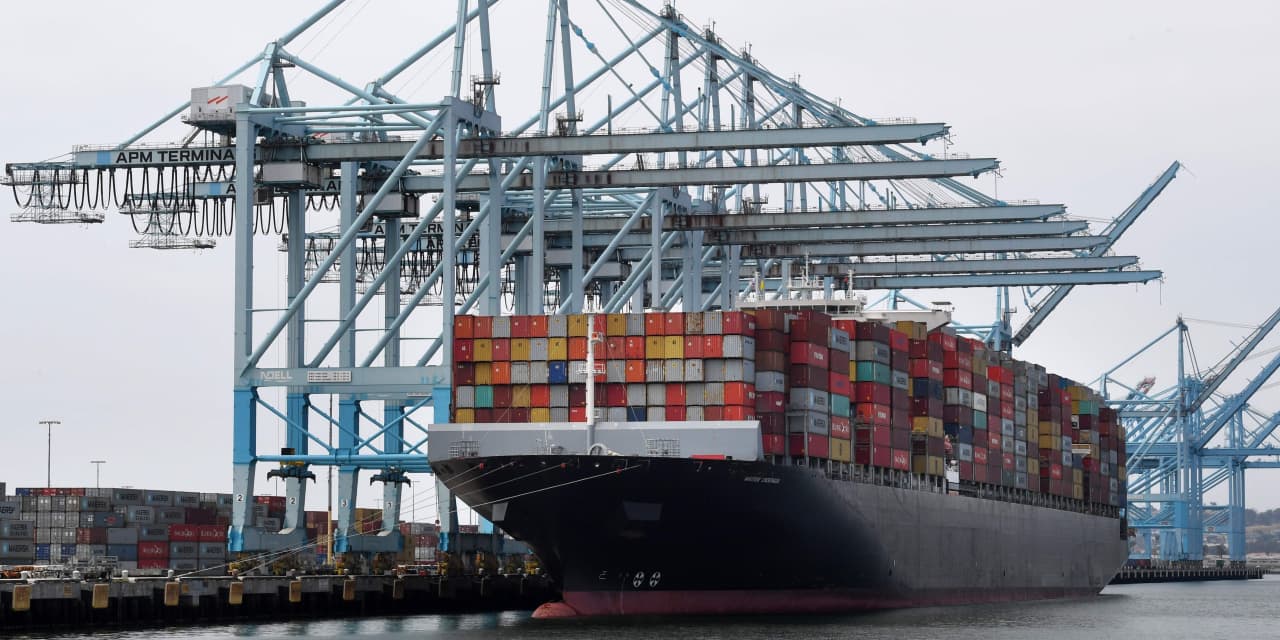A spate of attacks launched by Houthi militants on ships traversing the Red Sea has stoked fears of a second wave of inflation. But Wall Street analysts are making the case that these concerns appear overblown, barring a more substantial escalation of tensions.
According to Dario Perkins of TSLombard, the link between rising freight costs and a rising consumer-price index is relatively weak, especially for developed-market economies like the U.S. Indeed, freight costs as a percentage of GDP are extremely low for the U.S. compared with other developed and large emerging-market economies.
There have been multiple studies that have tried to calibrate the link between rising freight costs and CPI, with the most comprehensive study commissioned by the International Monetary Fund.
Read more: Red Sea attacks add ‘element of uncertainty’ for food retailers, says BMO
The starting point, according to Perkins, should be obvious: To calculate the impact of rising freight costs on inflation, one must first determine the share of imports in the CPI, then determine the share that freight costs represent among imports.
Based on these inputs, it would appear that small island nations will face the biggest price shock from these trade disruptions, while the U.S. could see an additional 0.4% to 0.7% tacked on to headline CPI. The impact on core CPI, meanwhile, is expected to be smaller, at 0.2%.
To be sure, the situation in the Red Sea isn’t the only issue provoking talk of a rebound in inflation. Christopher Smart, managing partner at Arbroath Group and a former chief strategist at Barings Bank, noted that the effects of El Nino have left the Panama Canal with historically low water levels, which is limiting shipping traffic through the critical waterway.
After some quick back-of-the-envelope math, Smart concluded that the impact on inflation from the situation in the Panama Canal would likely be negligible.
“Even if canal shipping costs double for a full year…the contribution to final prices is negligible,” Smart said.
He also pointed to one-year inflation breakevens, a market-based gauge of investors’ inflation expectations one year out. This key inflation gauge has actually fallen since December, he noted. The gauge came in at 2.43%, which represents the expected year-over-year inflation rate one year from now, according to an estimate released earlier this month.
“If you must worry about something, worry about the allied Navy SEALS who died taking on the Houthis, worry about Middle East hostilities escalating or worry about the continuing costs of climate change and weather damage,” Smart said. “Don’t, don’t, don’t worry about CPI.”
While the effect on inflation may not be a concern, the fallout from the attacks on cargo ships is contributing to investor anxiety around a number of retail stocks, analysts say.
See: These retail stocks could be exposed to Red Sea disruption, say analysts
As for how the Federal Reserve might respond, Perkins said the central bank would most likely look through any supply shock, given that U.S. freight costs haven’t risen very dramatically, as the chart below shows.
So far, at least, the impact of the attacks on shipping vessels in the Red Sea has been negligible. Based on the PCE gauge, the Fed’s preferred inflation barometer, the yearly rate of core inflation slowed to 2.9% in December from 3.2% during the prior month, marking the lowest level in almost three years.
On Wall Street, investment-bank strategists have seen little reason to change their forecasts for how many times the Fed will cut interest rates in 2024. A team at Goldman Sachs Group reaffirmed on Monday that it expects the Fed to cut interest rates five times this year, with the first cut expected after the Fed’s March meeting.
Stocks have taken the geopolitical worries in stride. Stocks were little changed Monday, after ending Friday with a third straight weekly gain. The Dow Jones Industrial Average
DJIA
logged its fifth record close since the end of 2023, while the S&P 500
SPX
finished a 10th of a percentage point below its all-time closing high and the Nasdaq Composite
COMP
ended less than 4% from its record close set on Nov. 19, 2021.
Read the full article here


